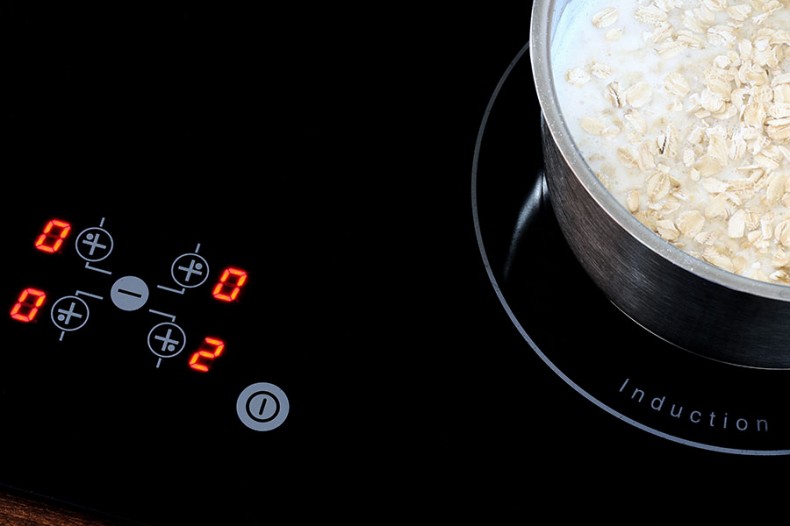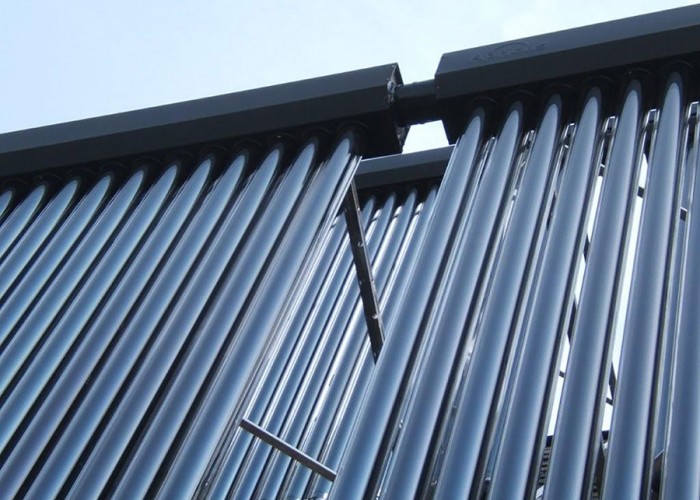Cooking with magnets?
The pros and cons of induction cooktops
By Hannah McKenzieQ: I am looking for a new range for my kitchen and stumbled upon induction heating as an option for the cooktop. I hear that induction cooktops use less energy than typical electric cooktops, but are they really worth the extra expense?
A: They may be. To start, let me break down what induction means. Electric ranges typically have either a radiant or an induction cooktop (but all bake and broil the same). When you turn on a radiant cooktop burner, electricity flows through a wire inside a heating element or below a sheet of glass, and the heat is radiated through the heating element or glass into the cookware.
Induction heat is generated from an alternating electric current traveling through a copper wire, which produces an electromagnetic field that, through a few more laws of science, generates heat in magnetic cookware.
The cooktop surface will be hot only if hot cookware has radiated heat back to it. My favorite cookbook wouldn’t burn on an induction cooktop burner because no heat will transfer to non-magnetic materials. This means your hand would be safe as well.
Induction cooktops have been gaining popularity in recent years as prices have dropped to around $900 for a freestanding unit. Ranges with radiant cooktops — coil and smooth surface — start at around $500. Technically speaking, induction cooktops are more energy efficient than radiant cooktops because they cook faster. However, the difference is not large enough to notice on an electric bill. Still, despite the price tag and only incremental energy efficiency improvement, there are a number of compelling reasons to consider induction cooktops for your kitchen:
- Cookware heats up nearly as fast as cookware on a gas cooktop.
- The smooth surface never gets as hot as a radiant smooth surface cooktop, so spills are much easier to wipe away.
- Safety can improve because heat is generated only in the cookware and not your hand or something flammable. I see these units being highly appealing in small spaces like a tiny home, RV or the kitchenette in your basement apartment.
- For individuals needing to sit while cooking, an induction cooktop without an oven below is quite thin and leaves more height for knee space than a radiant electric cooktop.
There are a few downsides to consider:
- Some folks may need to purchase new cookware. Maw Maw’s seasoned cast-iron skillet will work perfectly, as will most stainless steel cookware, but other items may not. Check to see if your cookware will work by confirming that a magnet will stick to the bottom.
- Some people find the soft hum or buzz from the cooling fan and electric current to be annoying. For others, it may be no more bothersome than the hum of a toaster.
- Electromagnetic fields are generally considered safe for most people, including those with pacemakers, but check with your cardiologist to be sure. Digital thermometers and radios may also cease to function when close to the cooktop.
As with any technology or device new to you, read reviews, research options and ask friends. Even better, give induction cooking a test drive first with an affordable hot plate or countertop model.
Cooking with induction heat may feel like a magic trick from Harry Potter, but I assure you, any high school physics student will explain that it’s just a basic principle of science. Happy cooking!
-
More ways to use less energy
-
Share this story:





